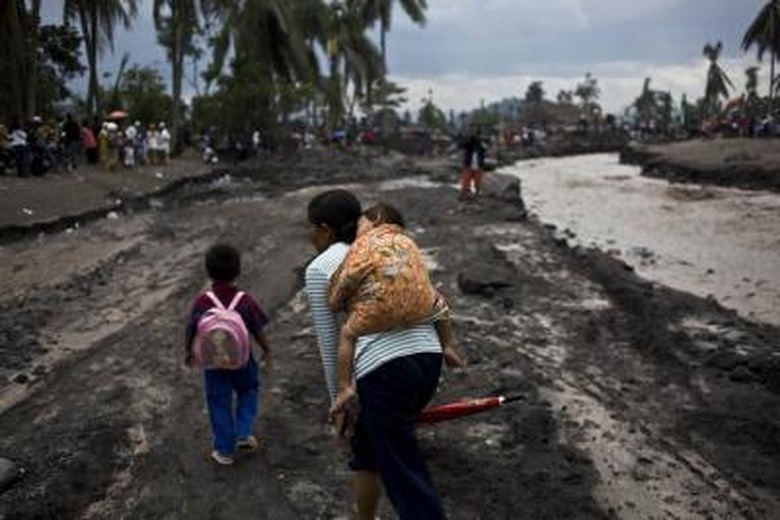Effects Of Mauna Loa's Eruptions
Mauna Loa, located on the Island of Hawaii, is one of the most active volcanoes on the Earth. Its flanks, produced by lava flow, reach across Hawaii to touch the sea in the northeast and northwest, while the entire southern part of the island is part of the volcano.
Land Formation
Though volcanic eruptions are destructive, they are also constructive. Indeed, Hawaii was formed because of volcanic activity. Since Mauna Loa is an active volcano, it is still adding to the island of Hawaii's land. Nearly all of Mauna Loa's surface is less than 10,000 years old. About 40 percent of it is less than 1,000 years old. When the volcano erupts, it is capable of sending forth a large volume of lava in a short amount of time.
Danger from Flows
Though Hawaii practices volcanic zoning, which tries to set aside land vulnerable to eruptions as, say, parks or recreation areas, sometimes the efforts have mixed results. Much of the city of Hilo is built on top of 20th-century lava flows from Mauna Loa. The volcano is classified as a "Decade Volcano," volcanoes that are watched and studied to mitigate the hazards posed to population centers by eruptions. The destructive effect of lava flows on populated areas can't be predicted until an eruption starts since it cannot be known how the flows will move.
Earthquakes
Thousands of earthquakes happen every year on the island of Hawaii, strongly linked to the activity of its 3 active volcanoes. Volcanic earthquakes are those that begin where magma is stored or in the paths it takes as it rises or flows before eruption. Magma is the parent material of lava. Eruptions at Mauna Loa are usually accompanied by these volcanic eruptions. Tectonic earthquakes–those caused by weakness at the base of volcanoes or movements of the Earth's crust–can cause active volcanoes to erupt. Seismic activity is constantly monitored in Hawaii.
Lava Meets the Sea
Mauna Loa eruptions can and have reached the ocean. One effect can be tephra jets. These are explosions driven by sea water transformed to steam. Lava instantaneously creates the steam as it hits the water. The resulting explosions can throw hot rocks, water and molten lava into the air. Another result of lava reaching the sea is the beginning of new land area, which can suddenly collapse.
Zones on Mauna Loa
Eruptions build shield volcanoes like Mauna Loa layer upon layer. Over immense geological time, this building has led to an elevation for Mauna Loa of 13,680 feet or 4,170 meters above sea level. The result is a range of weather conditions and vegetative zones from sea level to the summit of the volcano. At sea level, Mauna Loa is tropical; farther up, it snows. Above 10,000 feet, it is periglacial with desert conditions.
References
- U.S. Geological Survey: Hawaiian Volcano Observatory
- Hawaii Center for Volcanology
- "Geology;" Stanley Chernicoff; 1999
Cite This Article
MLA
Johnson, Sophie. "Effects Of Mauna Loa's Eruptions" sciencing.com, https://www.sciencing.com/effects-mauna-loas-eruptions-5072804/. 24 April 2017.
APA
Johnson, Sophie. (2017, April 24). Effects Of Mauna Loa's Eruptions. sciencing.com. Retrieved from https://www.sciencing.com/effects-mauna-loas-eruptions-5072804/
Chicago
Johnson, Sophie. Effects Of Mauna Loa's Eruptions last modified March 24, 2022. https://www.sciencing.com/effects-mauna-loas-eruptions-5072804/
